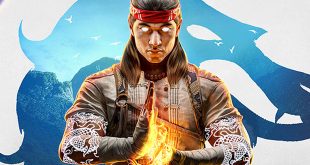
Tails of Iron is a somewhat more adorable approach to the Soulslike genre than you’re perhaps used to.
The game’s rat prince protagonist feels as if he walked directly out of popular children’s fantasy series Redwall, especially once he’s decked out in full armour. Add on the dialogue system (or lack thereof), in which characters will speak in a series of images, and it’s maybe the cutest thing I’ve ever seen.
Which makes it all the more jarring when I see my beautiful rat boy being murdered again, and again, and again. It’s as if the game wants me to fall in love, only to stamp on my heart right before my eyes. It’s a decision I respect, frankly.
REBUILDING THE KINGDOM
It’s the second title from the Manchester-based Oddbug Studios, following up on its debut title The Lost Bear, a 2017 PSVR and Oculus title. Its first game was received well enough – sitting at a respectable 77 on Metacritic, but its release had nonetheless put the studio onto an uncertain path going forward.
“After releasing our first game, the studio had a somewhat uncertain future,” said Jack Bennett, co-founder of Odd Bug Studio. “Because of this, we wanted to create a game that we really wanted to play as we didn’t know what would come next. As a studio, we love fantasy RPGs combined with a strong and distinctive combat system, which is what gave us the foundation for what we wanted to create with Tails of Iron. The possibility of our development team being disbanded led directly into the story of the game with Redgi having to rebuild his ‘kingdom’ and rescue his brothers.
“Tails of Iron had three main design pillars when we first started development, which I think still holds true in the final game. The first pillar was story, which would be told through quests. We knew we wanted to deliver an interesting fairytale-like story, and we knew we wanted to create an RPG, so these two kind of went hand-in-hand from the very beginning of development. The second pillar was brutal combat. We knew we wanted the combat to be challenging, and we knew we wanted it to be gory as this all supported the story of a young king fighting against all odds to reclaim his kingdom. The final pillar was exploration and RPG elements. We knew we wanted an open world for players to explore and for them to have a map, different equipment types and side quests as this all fed back into the other pillars. Together, these three pillars created a cohesive and immersive world for players to explore.”

While the punishing nature of the game will draw inevitable comparisons to Dark Souls (to which all games must be compared, apparently), the game takes more inspiration from the likes of Hollow Knight.
“We took inspiration from a lot of different places when creating Tails of Iron,” says Bennett. “From a game point-of-view it was things like The Witcher, Hollow Knight, Salt and Sanctuary and God of War. These games all combined a fantasy world with a strong and distinctive combat system which is what we wanted to create with Tails of Iron.
“Other inspirations were things like Redwall, [children’s book] Mouse Guard and Wind in the Willows for the anthropomorphic characters set in a turbulent world. Finally other inspirations were Lord of the Rings and Game of Thrones for their epic and brutal stories.”
It’s interesting that Bennett mentions The Witcher – as while the game’s characters don’t speak themselves (outside of crude pictograms), the game is narrated in full by none other than Geralt of Rivia himself, Doug Cockle. Which certainly came as a pleasant surprise to us.
“I keep saying working with Doug is a career highlight!” says Bennett. “His voice is just amazing, and as soon as you hear it you know you’re in for a dark, gritty but also epic adventure. Working with him is amazing too. He’s so nice and is always willing to work together to get the best out of the line, so yeah, it was just a great experience. In terms of getting Doug to work on such a small indie game, we were as surprised as you are!
“When we were first talking about adding a narrator to the game, we were floating about ideas for who we would like it to be, and we always came back to Geralt of Rivia as an almost pie-in-the-sky idea. Thankfully though, our publisher United Label handled it all. They showed Doug the game and he loved it, so he was on board from there. We’re so glad he said yes because his narration just really brings the whole game together.”

KINDER SOULS
Beyond its cuteness, what makes Tails of Iron stand out from other Soulslikes is how forgiving it can feel – relatively, anyway. While the combat is certainly challenging, checkpoints (taking the form of a nice park bench for your rat friend to take a break) are plentiful, and it’s rare to find yourself in a long stretch of combat without finding a place to take a breather.
“We knew when we started creating Tails of Iron to have a brutal and difficult combat system that this could be a possible point of contention for players, especially when the art style is so ‘cute’,” notes Bennett. “A lot of players might not be expecting it. We never made the decision to make the combat more forgiving, but we did want it to be more approachable. Removing the stamina bar and giving the enemies attack indicators meant that, from a player perspective, they were able to understand the combat better, and the lack of stamina bar meant they were free to experiment with their combat style.
“From a design point-of-view, our main issue was the stamina bar. When we first started developing Tails of Iron, we had a stamina bar like most souls-likes, however, we quickly noticed that players would watch the user interface rather than their enemy. This was not the type of combat that we wanted – we wanted the player to be watching their enemy, reading its attacks, and responding accordingly. By removing the stamina bar, the player was much more focused on the enemy and much more engaged with the combat.
“The lack of stamina bar also meant that players were much more likely to take risks, since they didn’t have to worry whether they could ‘afford’ to attack or dodge-roll. This made the combat feel much more fluid and those near-death victories more rewarding.”
While the challenge might be a point of debate, the game’s art style certainly isn’t. Its distinctive style immediately sets the tone – often dark and grimey, and yet always a pleasing world to spend time in. It’s a style adopted from the studio’s previous game, and one that promises to be something of a brand going forward.
“The art style is something that we’ve been developing since our first game The Lost Bear. We want every game that we create to have a very distinctive Oddbug style, similar to what you would expect from a Studio Ghibli or Pixar movie. Our art director is from the Czech Republic and is heavily inspired by Eastern European block printing. This is why our world and characters have the thick black outlines that give the game that high level of detail. In addition to this, all of the assets you see in the scene are individually placed. Rather than creating a few layers of depth, every asset is placed on its own z depth, which helps create that intense parallax effect you see throughout the levels.”
A large part of the game’s charm is, of course, the rat protagonist. The Redwall comparisons may go some way to explaining the rationale behind a rat hero, but I’m happy to say the real truth is even more adorable than that.
“All the main character rats in the game are actually based on the game director’s own pet rats,” says Bennett. “Unfortunately, we spent so long developing the game that they have all passed away, so Tails of Iron serves as a fitting memory to them. We even included a hand-painted image of them in the game’s main menu.”
And so how are things looking for Oddbug Studios now? The team were on uncertain ground following the launch of The Lost Bear. Has Tails of Iron changed their fortunes at all?
“The launch of Tails of Iron has been going well! We have a really strong fan base that really loves the game and is already crying out for a DLC or a sequel, so it’s really cool to see that we’ve had an impact on a lot of players. We’ve also had a lot of big influencers play the game, so it’s awesome to see them drawing a lot of attention to it!”

 MCV/DEVELOP News, events, research and jobs from the games industry
MCV/DEVELOP News, events, research and jobs from the games industry




